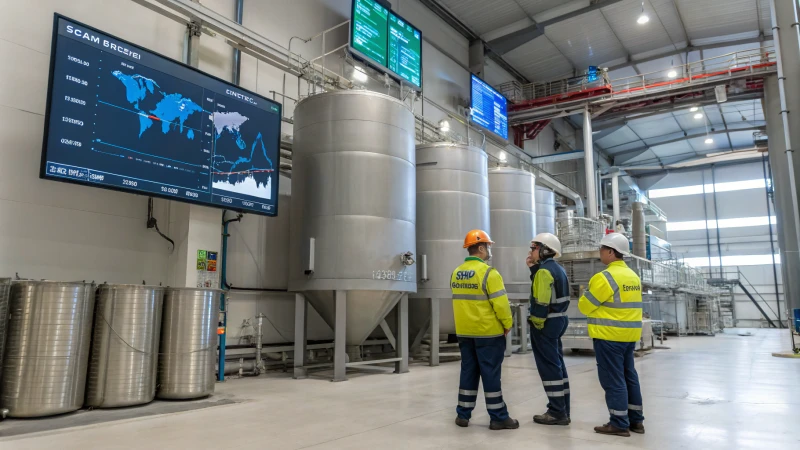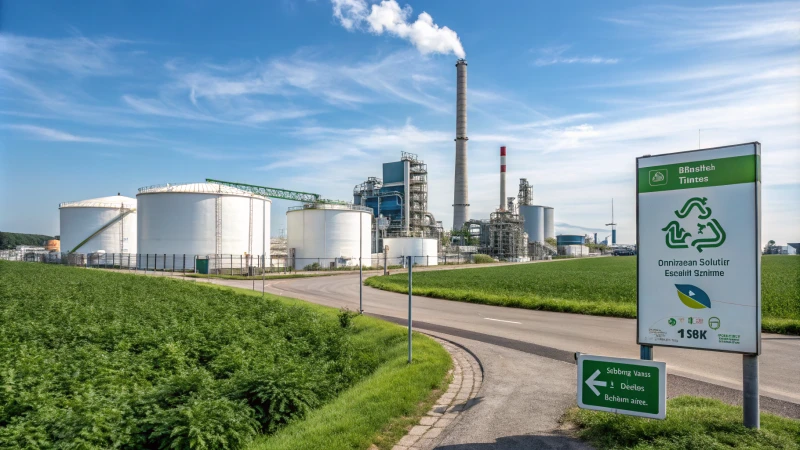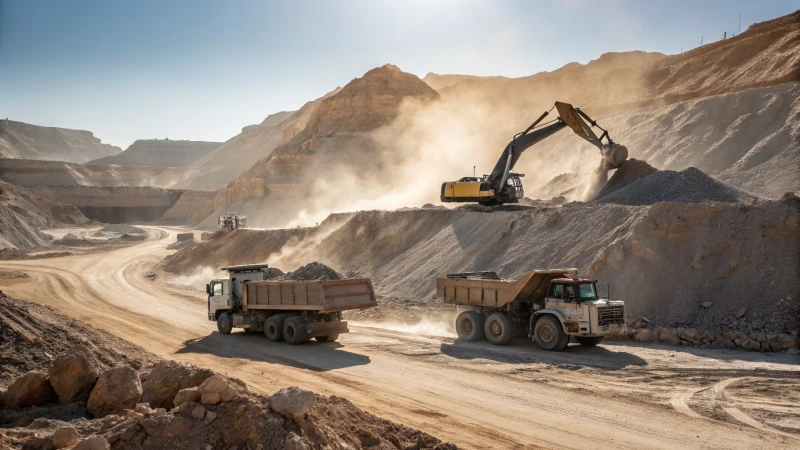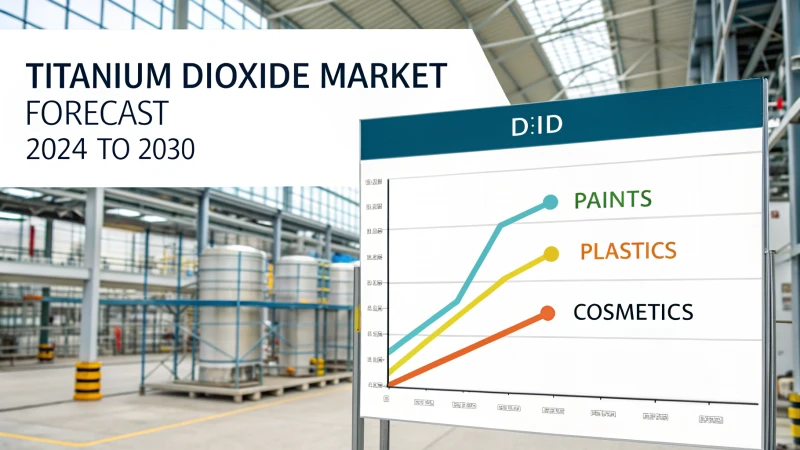
Are you curious about the current state of titanium dioxide prices? I know I am! It's fascinating to see how market dynamics shape our industries.
Recent trends in titanium dioxide (TiO2) prices show a complex picture. Global supply and demand changes shape this landscape. Rising production costs also play a part. Sustainability becomes more important too. Prices have increased recently. Energy costs contribute to this rise. Raw material shortages also push prices up. Significant demand comes from emerging markets. This demand is very notable.
Understanding titanium dioxide prices is like riding a roller coaster. When you think you understand the trends, new factors appear. Recognizing these changes is very important for smart business choices. Production costs have risen recently. Energy prices and raw material shortages have greatly affected prices. Demand from new markets has changed the game. Staying updated on these changes is more important than ever. Really important.
Titanium dioxide prices are currently increasing due to demand.True
Rising demand from emerging markets contributes to the increase in titanium dioxide prices, reflecting the complex dynamics of the market.
Energy costs have no impact on titanium dioxide pricing trends.False
Contrary to this claim, rising energy costs are a significant factor affecting titanium dioxide prices today.
What Factors Are Influencing Titanium Dioxide Prices Today?
Did you ever think about what truly affects the price of titanium dioxide? It's not only about numbers. Demand, supply and global happenings really play a role. Let's explore this interesting topic together.
**Today's titanium dioxide prices change due to the balance of supply and demand, raw material costs, environmental rules and global politics. Understanding these factors helps buyers make smart decisions in this ever-changing market. Watching these trends can really save time and money over time.
Supply and Demand Dynamics
Supply and demand shape titanium dioxide pricing. Demand once surged suddenly because of a rise in industrial activities in regions like Asia-Pacific and Latin America. Prices quickly changed when demand outpaced supply. Industries like coatings and plastics now really need high-quality TiO2 for better durability and looks.
These demand increases don't happen alone. Global tensions and impacts of the COVID-19 pandemic have created supply chain difficulties. They turn availability into a very challenging task. I often check supply chain analysis for how these disruptions affect my pricing strategies.
Raw Material Costs
Raw material costs play a huge role in TiO2 pricing. Fluctuations in the costs of titanium feedstock like ilmenite or rutile impact my profits. Rising extraction and energy costs are real challenges we face. Manufacturers often pass these costs to consumers, leading to higher prices for titanium dioxide.
I stay alert to these changes to adjust pricing strategies properly. Insights on cost management strategies prove incredibly helpful for businesses in this complicated environment.
Environmental Regulations
Environmental rules increasingly impact titanium dioxide pricing. Many producers invest in cleaner technologies to meet strict standards aimed at reducing environmental damage. Although I admire these steps towards sustainability, they might cause short-term production cost increases.
This shift towards greener methods affects pricing꞉
Higher Compliance Costs꞉ Technology and processes to meet standards require investment.
Eco-Friendly Premium꞉ Sustainable products might have higher market prices.
Long-term Balance꞉ Higher initial costs might stabilize as sustainable production grows common.
Understanding sustainability trends is crucial for strategic choices in our industry.
Geopolitical Factors
Geopolitical influences are also crucial. Trade rules, tariffs and international relationships significantly affect supply chains and pricing worldwide. Tensions between key producers can disturb supply lines or trigger trade restrictions impacting TiO2 availability and pricing.
Geopolitical impacts on pricing include꞉
Trade Tariffs꞉ Import costs can raise domestic TiO2 prices.
Supply Chain Risks꞉ Relying on one source country poses risks during conflicts.
Market Instability꞉ Sudden trade agreement changes cause unpredictable price shifts.
Remaining informed about geopolitical issues is essential for navigating these challenging waters effectively.**

Understanding the Factors Influencing Titanium Dioxide Prices
Understanding the things that change titanium dioxide prices is very important for people in manufacturing or supply. At the start of my journey in this industry, I was really surprised by the connections between everything. Each small change in the market felt like a wave. These waves affected production costs and delivery times. Let’s explore these elements and learn how they shape our decisions today.
Supply and Demand Dynamics
The balance between supply and demand is a fundamental factor affecting titanium dioxide prices. When demand exceeds supply, prices typically rise. In recent years, increased industrial activities, especially in emerging markets such as Asia-Pacific and Latin America, have significantly contributed to the demand for TiO2. For instance, the coatings and plastics industries are increasingly utilizing high-quality titanium dioxide for improved durability and appearance.
To visualize this trend, consider the following table that outlines key regions and their respective growth rates in TiO2 demand:
| Region | Growth Rate (%) | Main Industries Driving Demand |
|---|---|---|
| Asia-Pacific | 5.2 | Coatings, Plastics |
| Latin America | 4.8 | Construction, Decoration |
| North America | 3.5 | Paints, Chemical Manufacturing |
This increased demand is set against the backdrop of ongoing supply chain challenges that have emerged due to geopolitical tensions and the lingering effects of the COVID-19 pandemic. Supply chain analysis1 can provide insights into how these disruptions impact availability and pricing.
Raw Material Costs
Another significant factor influencing TiO2 prices is the cost of raw materials used in its production. Titanium feedstock costs, such as ilmenite or rutile, have been on the rise due to scarcity and increased extraction costs. Moreover, soaring energy prices have further inflated production costs. Manufacturers often pass these costs onto consumers, resulting in higher prices for titanium dioxide.
For instance, a breakdown of the cost components of TiO2 production might look like this:
| Cost Component | Percentage of Total Cost (%) |
|---|---|
| Raw Materials | 50 |
| Energy | 30 |
| Labor | 15 |
| Transportation | 5 |
As energy and raw material prices fluctuate, companies must be vigilant in monitoring these changes to adjust their pricing strategies accordingly. Insights on cost management strategies2 can help businesses navigate this complex landscape.
Environmental Regulations
Increasing environmental regulations are also shaping the market for titanium dioxide. Many manufacturers are investing heavily in cleaner production technologies to comply with stringent regulations aimed at reducing environmental impact. While this shift towards sustainability is commendable, it can lead to increased production costs in the short term.
The transition to greener practices may influence pricing structures in the following ways:
- Higher Compliance Costs: Investments in technology and processes to meet regulatory standards.
- Sustainable Product Premium: Eco-friendly products may command higher prices in the market.
- Long-term Stabilization: Initially higher costs could stabilize prices as sustainable practices become the norm.
Understanding the implications of sustainability trends3 in the titanium dioxide industry is crucial for stakeholders making strategic decisions.
Geopolitical Factors
Lastly, geopolitical factors cannot be overlooked. Trade policies, tariffs, and international relations impact supply chains and pricing mechanisms globally. For example, tensions between major producing countries can disrupt supply lines or lead to trade restrictions that affect availability and pricing of titanium dioxide.
A closer look at how geopolitics impacts pricing could reveal:
- Trade Tariffs: Costs imposed on imported TiO2 can inflate prices domestically.
- Supply Chain Vulnerabilities: Reliance on a single source country can create risks during geopolitical conflicts.
- Market Volatility: Sudden shifts in trade agreements can lead to unpredictable price fluctuations.
For further details on how geopolitical issues4 affect raw materials markets, industry professionals should stay informed.
Rising demand in Asia-Pacific increases TiO2 prices.True
The growing industrial activities in Asia-Pacific significantly boost the demand for titanium dioxide, leading to higher prices due to supply-demand imbalance.
Environmental regulations lower titanium dioxide production costs.False
Increased environmental regulations often raise production costs as manufacturers invest in cleaner technologies, impacting TiO2 pricing.
How Is Global Demand Shaping the Future of TiO2 Pricing?
Have you ever thought about how the world around us affects the prices of everyday items? The need for titanium dioxide (TiO2) clearly shows this. Let's find out how these changes might shape future prices. What does it mean for us?
The world wants more titanium dioxide (TiO2). This substance is in high demand. Industrial growth in new markets influences its price. Political problems disrupt supply chains. Green initiatives increase production costs. These factors shape TiO2 pricing.

The Impact of Emerging Markets on TiO2 Demand
Thinking about titanium dioxide reminds me of a talk with a friend who owns a paint factory. He often talks about his troubles with changing prices and how this affects his business. Clearly, global demand is not just a number; it truly affects people and companies like his.
Emerging markets in Asia-Pacific and Latin America are really seeing a big rise in demand for titanium dioxide. Rapid industrial growth fuels this increase, leading to more top-quality coatings, plastics, and cosmetics being needed.
I once visited India and saw busy factories increasing their production. It was amazing how countries like India and Vietnam are changing the TiO2 scene by increasing consumption and also demand for local supplies. This helps keep prices steady and maybe creates interesting regional price changes. More details on these market dynamics can be explored here5.
Geopolitical Influences on Pricing
Unexpected events, like the COVID-19 pandemic, remind us how fragile supply chains can be. These challenges raise production costs for TiO2 manufacturers. In 2023, energy prices soared by 20%. This rise was more than a figure; it meant tougher times for producers, pushing TiO2 prices up. Companies like my friend's must handle global trade challenges while meeting local rules. To gain further insights into this topic, click here6.
Sustainability Trends Affecting Costs
Sustainability is a hot topic these days and it's important! Many companies are shifting to eco-friendly production, which is great for Earth. But I noticed that this shift often leads to short-term cost jumps. For example, a company I knew invested a lot in green technology; while their costs soared at first, over time their operational costs fell. As more businesses go green, TiO2 prices may stabilize even with changing raw material costs. More information on sustainability trends can be found here7.
Price Forecast and Industry Strategies
Looking forward, the titanium dioxide market will probably see moderate price increases due to continued demand and ongoing supply chain challenges. Industry players tell me that flexibility is key to staying competitive; using different suppliers or exploring new materials may reduce dependence on TiO2. For comprehensive market forecasts and strategic insights, refer to this resource here8.
Emerging markets are driving TiO2 demand in Asia-Pacific.True
Countries like India and Vietnam are increasing TiO2 consumption due to industrialization, boosting demand significantly in the Asia-Pacific region.
Geopolitical events have no effect on TiO2 pricing.False
Recent geopolitical disruptions, such as the COVID-19 pandemic, have significantly impacted supply chains and increased production costs for TiO2 manufacturers.
How Do Environmental Regulations Shape Trends in the TiO2 Market?
Have you ever thought about how rules for the environment affect the market for titanium dioxide (TiO2)? These rules influence the making of TiO2. They also guide market trends. Pricing strategies change because of them.
Environmental rules are very important in the TiO2 market. They affect production costs. Rules also support sustainable methods. This sometimes causes changes in the market. Regulations influence how manufacturers compete. Knowing these factors really helps to understand pricing and demand in this area.

The Impact of Environmental Regulations on Production Costs
I initially stepped into the titanium dioxide industry, feeling amazed by the impact of environmental rules. These rules truly influence this market. Companies must follow them carefully. Regulations aren't just boring obstacles; they directly affect operations and pricing. I noticed how following these rules is tricky. It supports sustainability, but it also challenges profit. This situation can be very difficult. Let's look into this matter together.
Shifting Demand Towards Sustainable Practices
The growing emphasis on sustainability has led many TiO2 producers to adopt environmentally friendly practices. This shift is driven by both consumer demand for sustainable products and regulatory pressures that prioritize reduced emissions and waste.
As companies invest in greener production methods, they may encounter short-term increases in costs but potential long-term benefits in market share. This trend indicates that environmental regulations can influence not just operational practices but also consumer behavior and preferences, as seen in the increasing popularity of eco-friendly coatings and products.
For more on the impact of sustainability on product demand, check out sustainable market trends9.
Market Volatility Due to Regulatory Changes
Frequent changes in environmental regulations can lead to market volatility within the TiO2 sector. Manufacturers must stay abreast of evolving regulations, which can vary significantly across different regions. For instance, if a country introduces stringent emission limits, local producers may be forced to adapt swiftly to avoid penalties, potentially leading to temporary disruptions in supply.
The table below illustrates how regulatory changes can impact various aspects of the TiO2 market:
| Regulatory Change | Impact on Production | Impact on Pricing | Impact on Supply Chain |
|---|---|---|---|
| Stricter emission limits | Higher production costs due to new technologies | Price increase to maintain margins | Supply disruptions due to compliance adjustments |
| Introduction of incentives for green practices | Potential reduction in costs over time | Stable prices due to reduced competition | Enhanced supply chain resilience with green suppliers |
Understanding these dynamics is crucial for companies involved in TiO2 production and distribution. For insights on navigating these changes, explore navigating regulatory landscapes10.
The Role of Compliance in Market Positioning
Compliance with environmental regulations not only impacts cost but also serves as a strategic differentiator in the TiO2 market. Companies that proactively adhere to or exceed regulatory requirements may gain a competitive edge by positioning themselves as leaders in sustainability.
This can enhance brand reputation and attract customers who prioritize environmentally responsible products. Additionally, firms that demonstrate compliance might find it easier to enter new markets where regulations are becoming increasingly important.
For businesses seeking to improve their compliance strategies, refer to best practices for compliance11.
Environmental regulations increase TiO2 production costs.True
Stricter regulations require investment in cleaner technologies, raising production costs for manufacturers.
Compliance with environmental regulations enhances brand reputation.True
Companies that exceed regulatory standards can differentiate themselves and attract sustainability-focused customers.
How Can Manufacturers Adapt to Fluctuating Titanium Dioxide Costs?
Manufacturers face great difficulties with changing titanium dioxide costs. The situation is truly daunting. Addressing these problems directly is necessary. How do we approach these challenges with confidence?
Manufacturers respond to changing titanium dioxide costs by improving sourcing methods. They also adjust inventory management. They invest in sustainable production methods.

In my journey through manufacturing, I often look at titanium dioxide (TiO₂) price charts with curiosity and concern. It's like standing on a wild rollercoaster - exciting and nerve-wracking. Prices shift based on global supply and demand, making it feel like catching a wave that changes direction. As manufacturers, we should embrace these challenges by improving our strategies and making smart decisions.
Understanding the Market Dynamics
The first step is understanding the market dynamics around titanium dioxide. These changing prices often reflect bigger forces like rising energy costs and raw material shortages. Geopolitical events, such as COVID-19, impact supply chains and raise prices unexpectedly.
Staying aware and informed of these trends helps predict how they might affect sourcing decisions. It’s like reading the tides; knowing the influences helps ride the wave effectively. Analyzing pricing trends and observing market insights are crucial parts of my strategy. They help navigate complexities and choose wisely in an ever-changing landscape.
Strategic Sourcing and Procurement
Refining sourcing strategies has significantly helped me. Building supplier relationships revealed how stronger partnerships lead to better pricing and reliable deliveries. It's like having a trusted ally in a competitive market.
Diversifying the supplier base also became important. Initially, relying heavily on one supplier made me feel trapped during unexpected price surges. Now, I seek partnerships in emerging markets where costs are more stable. This reduces risks and opens new opportunities.
Here's an overview of potential sourcing strategies:
| Strategy | Description | Benefits |
|---|---|---|
| Supplier Diversification | Partnering with multiple suppliers to spread risk | Reduces dependency on one supplier |
| Long-term Contracts | Securing prices over extended periods | Predictable costs |
| Local Sourcing | Sourcing from local suppliers to reduce shipping costs | Lower transportation expenses |
Inventory Management Adjustments
Adjusting inventory management is crucial during price changes. Once, I underestimated inventory needs and scrambled during a price surge. It taught me the importance of predicting future needs based on expected price trends.
A just-in-time inventory system requires balance, but if done right, it minimizes holding costs and avoids shortages during critical moments.
Using data analytics to predict inventory needs has streamlined operations significantly. It’s like having a compass in stormy seas of fluctuating costs - helping optimize inventory when it truly matters.
Emphasizing Sustainability Initiatives
A growing trend towards sustainability in manufacturing resonates with me. Cleaner production processes may seem like extra expenses, but they represent an investment in the future. The long-term savings and stability from these initiatives are valuable.
Adopting sustainable practices not only benefits the environment but also meets consumer demand for eco-friendly products. I believe that a commitment to sustainability can set a brand apart in a competitive market, fostering customer loyalty.
To explore how sustainability influences pricing strategies, consider researching eco-friendly manufacturing practices12.
Rising energy costs impact titanium dioxide prices significantly.True
Energy costs are a major factor influencing the market dynamics of titanium dioxide, driving prices higher due to increased production expenses.
Sustainable practices can lead to long-term savings for manufacturers.True
Investing in sustainability may raise initial costs but ultimately results in reduced expenses and improved brand loyalty over time.
Conclusion
Titanium dioxide prices are influenced by rising demand, production costs, and environmental regulations, leading to fluctuations in the market that manufacturers must navigate strategically.
-
This query will provide insights into current market trends affecting titanium dioxide pricing, essential for strategic decision-making. ↩
-
Learn about strategies to manage raw material costs effectively in the titanium dioxide market. ↩
-
Explore sustainability trends impacting titanium dioxide pricing and production processes. ↩
-
Understand how geopolitical factors influence raw material markets and pricing dynamics. ↩
-
Discover how global demand influences TiO2 pricing trends and what strategies you can adopt. ↩
-
Learn about the geopolitical factors affecting titanium dioxide prices and how they shape market dynamics. ↩
-
Explore sustainability trends in titanium dioxide production and their effect on pricing strategies. ↩
-
Get insights into future price forecasts for titanium dioxide and strategic industry responses. ↩
-
Clicking this link will provide insights into how sustainability affects market dynamics, helping you align your strategies accordingly. ↩
-
This link offers strategies for navigating regulatory challenges, crucial for maintaining competitiveness in the TiO2 industry. ↩
-
Learn about compliance best practices to enhance your business's competitive edge and sustainability efforts by following this link. ↩
-
Explore sustainable manufacturing practices that can help stabilize costs and improve brand loyalty in a fluctuating market. ↩





